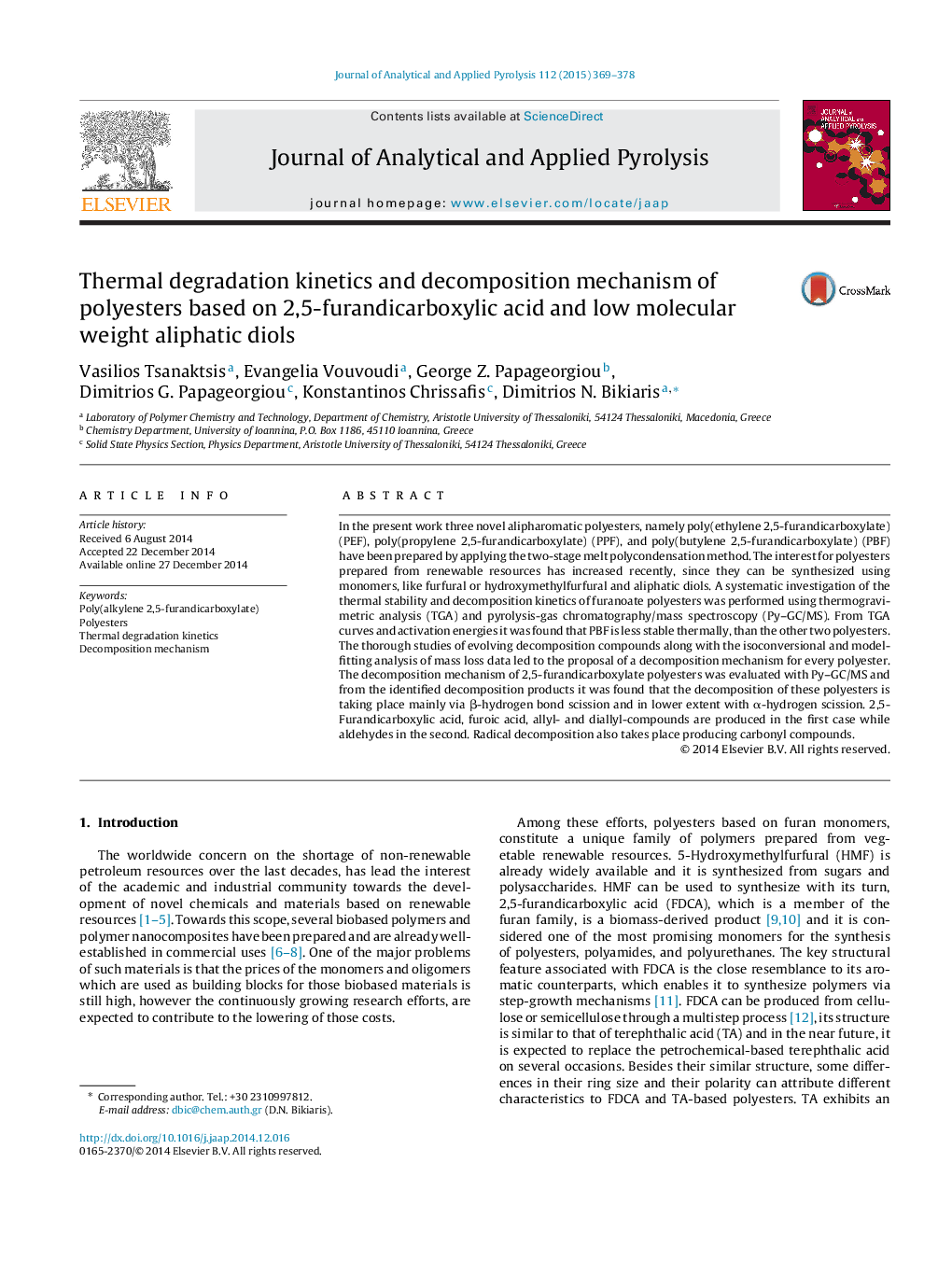| کد مقاله | کد نشریه | سال انتشار | مقاله انگلیسی | نسخه تمام متن |
|---|---|---|---|---|
| 1197255 | 1492965 | 2015 | 10 صفحه PDF | دانلود رایگان |
• Poly(alkylene 2,5-furandicarboxylates) can be prepared from biobased monomers.
• Thermal stability and decomposition kinetics of such polyesters are presented.
• The increasing number of methylene groups, decreases the thermal stability.
• Their decomposition takes place mainly via β- and α-hydrogen bond scission.
In the present work three novel alipharomatic polyesters, namely poly(ethylene 2,5-furandicarboxylate) (PEF), poly(propylene 2,5-furandicarboxylate) (PPF), and poly(butylene 2,5-furandicarboxylate) (PBF) have been prepared by applying the two-stage melt polycondensation method. The interest for polyesters prepared from renewable resources has increased recently, since they can be synthesized using monomers, like furfural or hydroxymethylfurfural and aliphatic diols. A systematic investigation of the thermal stability and decomposition kinetics of furanoate polyesters was performed using thermogravimetric analysis (TGA) and pyrolysis-gas chromatography/mass spectroscopy (Py–GC/MS). From TGA curves and activation energies it was found that PBF is less stable thermally, than the other two polyesters. The thorough studies of evolving decomposition compounds along with the isoconversional and model-fitting analysis of mass loss data led to the proposal of a decomposition mechanism for every polyester. The decomposition mechanism of 2,5-furandicarboxylate polyesters was evaluated with Py–GC/MS and from the identified decomposition products it was found that the decomposition of these polyesters is taking place mainly via β-hydrogen bond scission and in lower extent with α-hydrogen scission. 2,5-Furandicarboxylic acid, furoic acid, allyl- and diallyl-compounds are produced in the first case while aldehydes in the second. Radical decomposition also takes place producing carbonyl compounds.
Journal: Journal of Analytical and Applied Pyrolysis - Volume 112, March 2015, Pages 369–378
